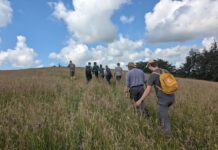
Wildlife charity Sea Life has rescued and rehabilitated 636 seals over the past 10 years with its rescue teams based at Scarborough and Hunstanton, and is seeking to raise the profile of its work on International Day of the Seal (22 March).
Staff have spent around 500 hours on average caring for each individual seal, says the group.
Seals require rescuing for several reasons, which can include pups getting separated from their mum, injury, or an outbreak of disease.
Once rescued, the seals need feeding every few hours, with new pups needing to be taught how to catch and eat fish for themselves, so they can safely be returned to the wild. Staff will also ensure all vitals remain steady, on top of cleaning, food preparation and administering any medicine or treatment when necessary.
As such, the estimated cost for rescuing seals, including working hours, medication, veterinary care, food and giving the seal a safe space for rehab works out at around £5,000 – £8,0000 per sea creature.
Home to Yorkshire’s only Seal Hospital, Sea Life’s Scarborough’s Seal Sanctuary opened in 2008, while the group’s Hunstanton’s dedicated Seal Rescue Centre and Hospital opened in 1989.
Nigel Croasdale, General Manager at Sea Life Hunstanton, said: “We are delighted to be putting the spotlight on our Animal Care Team and the amazing work at our Seal Hospital this International Day of the Seal. Our staff work so hard to ensure seal populations can thrive and we are immensely proud of the work they do.
“Without these rescue and rehabilitation programmes, local seal populations would almost certainly decrease, so it is vital that we continue to look after the seals in need that turn up on our coastlines.
“Thanks to our Seal Hospital, we can help rehabilitate several seals and we make sure to educate our visitors about how important it is to protect our coastline, so that all species living on it, including seals can flourish, helping to reduce the number of seals that require urgent care. Once released back into the wild, we tag all our seals so we can keep track of their integration back into the sea, it’s fascinating to see how far they travel.”
An example of the work carried out by the teams in Scarborough and Hunstanton is the rescue of Lady (pictured, above), in April 2019. Lady was discovered on a beach in Scarborough, significantly too small for her age and very skinny. After blood testing, it was clear Lady was fighting an infection, as well as several wounds that the team suspected were from a dog attack.
Despite her poor health, Lady became stronger and stronger thanks to the aid of the Animal Care Team, eventually being released in June 2019. In December 2022, Lady was spotted in the Farne Islands, fit and healthy having integrated back into the wild successfully. For video footage of Lady back in the wild, please view here.
For further information and to book tickets to see the incredible work carried out by SEA LIFE Scarborough and Hunstanton’s Seal Hospitals, visit the website: https://www.visitsealife.com/







